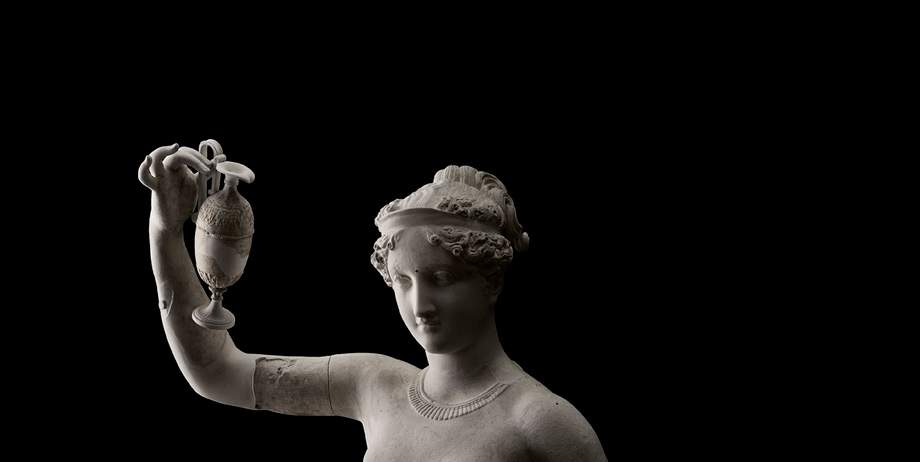From Dec. 4, 2021 to May 30, 2022, the Museo Civico in Bassano del Grappa is hosting the exhibition Ebe Canova.
After the Allied bombing of Bassano on April 24, 1945, fragments of one of the most beautiful and fascinating plaster casts by Antonio Canova were received as relics. Fragments that remained in the deposits of the Civic Museums of Bassano del Grappa for over seventy years, forgotten because their recomposition was considered impossible for a long time. Thanks to new technologies applied to restoration, it was possible to rediscover the form and grace of the mythical Hebe of Bassano. In fact, it was an innovative conservative intervention, entirely financed by Rotary Bassano and Rotary Asolo Pedemontana del Grappa that brought the work back to life. The City of Forli, owner of the marble version of Hebe to which the Bassano plaster is connected, also collaborated in the undertaking.
The rediscovered masterpiece will thus be the protagonist of an exhibition on Canova’s reinterpretation of the mythological figure of Hebe, symbol ofeternal youth.
Through the centuries, the myth of Hebe has known alternating fortunes in Western culture. Mentioned by Homer and Hesiod, Hebe, daughter of Zeus and Hera, was given the role of enophora, the handmaiden of the gods. Her mysterious nectar bestowed immortality and eternal youth. After her marriage to Heracles, her role as cupbearer of the gods was assigned to Ganymede. A profound connoisseur of the classical, nourished by the antiquarian culture that in the eighteenth century was devotedly unearthing and classifying precious ancient artifacts, Canova knew how to depict the myth of this deity in an emblematic image, that of youth caught at the height of her flourishing beauty. He produced two different versions of it. The first, in which the young goddess, about to mix ambrosia, lands on a frothy cloud; the other, caught as she gracefully rests her feet at the base of a tree trunk. Both versions, transposed into marble, are held in four major public and private collections in Europe: from the Staatlichen Museen in Berlin to the Hermitage in St. Petersburg, from the Devonshire Collection in Chatsworth to the Musei di San Domenico in Forlì.
In the Canovian Hall of the museum in Bassano del Grappa, the rediscovered Hebe will be compared with the first plaster version of the same subject, heritage of the Paduan Papafava Collection. The two masterpieces will be at the center of an evocative journey that will evoke the alternating fortunes of the Hebe myth in the figurative arts.
A myth that from the representations animating the craters of Magna Graecia and ancient paintings, will be depicted in the work of some important painters of the Renaissance such as Parmigianino and Rosso Fiorentino, whose inventions were skillfully translated into refined engravings; until reaching, at the end of the eighteenth century, the Canovian invention, also inspired by the precious illustrated volumes of his personal library that will be on display in the exhibition. That of Hebe is an image that will accompany the sculptor’s entire career and that is echoed as much in the theme of the dancing figures protagonists of the drawings and monochromes on raw canvas as in the portraits of the most famous women of his time styled in fashion, such as Leopoldina Esterhazy-Liechtenstein, Elisa Baciocchi Bonaparte and Carolina Murat, up to the ideal heads, a successful genre in which the Venetian sculptor experiments with subtle and endless variations of the ideal beauty. Finally, a chapter will be devoted to an illustration of the complex restoration work that brought the Bassanese Hebe back to life.
For info: www.museibassano.it
Image: Antonio Canova, Hebe, detail (1817; plaster; Bassano del Grappa, Museo Civico) © Slowphoto Studio
 |
| Bassano del Grappa dedicates an exhibition to its rediscovered Hebe by Canova |
Warning: the translation into English of the original Italian article was created using automatic tools. We undertake to review all articles, but we do not guarantee the total absence of inaccuracies in the translation due to the program. You can find the original by clicking on the ITA button. If you find any mistake,please contact us.